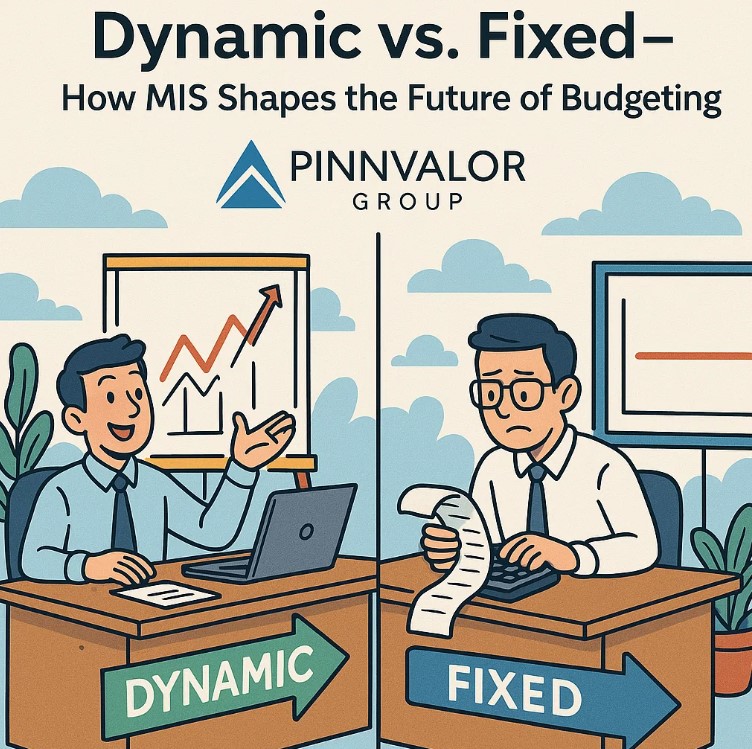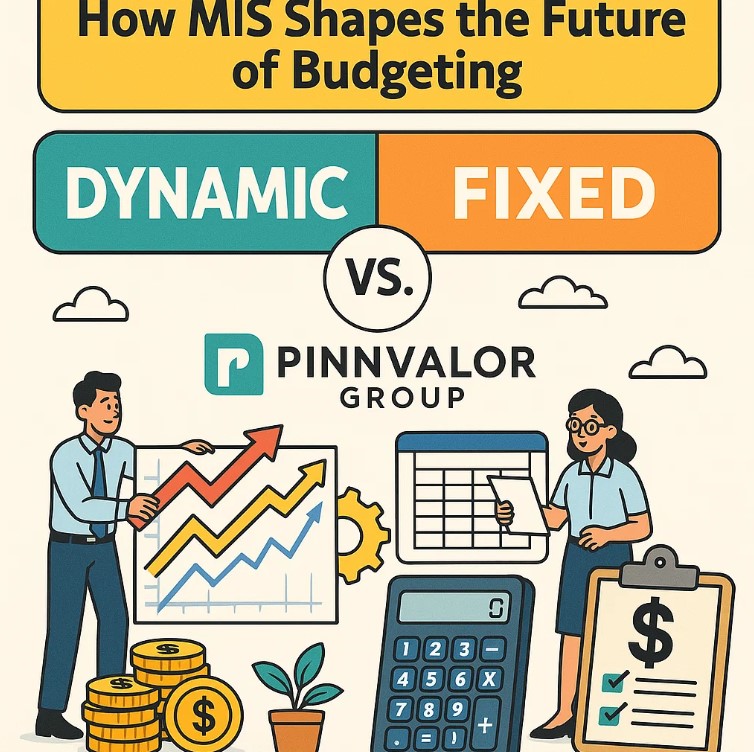
Dynamic vs Fixed – How MIS Shapes the Future of Budgeting
In today’s fast-paced business environment, budgeting is no longer just about creating a spreadsheet once a year and sticking to it. The rise of Management Information Systems (MIS) has transformed the way organizations plan, monitor, and adjust their finances. The debate between dynamic (rolling forecasts) and fixed (static budgets) has become central to financial strategy.
Let’s explore how MIS is driving this shift — and why your business should care.
Are static budgets silently holding back your growth potential?
Without MIS, rolling forecasts are slow and error-prone. With MIS, they become faster, sharper, and more insightful.
1. Understanding the Two Approaches
Static Budgets (Fixed Approach)
A static budget is created at the start of the fiscal year and remains unchanged, regardless of how market conditions evolve. It’s a traditional approach that provides a fixed target, often used in stable industries.
- Set once, rarely adjusted
- Useful for cost control and benchmarking
- Works well in predictable environments
Example: A manufacturing company forecasts raw material costs in January and sticks to that figure all year, even if prices rise or fall.
Rolling Forecasts (Dynamic Approach)
A rolling forecast is continuously updated — typically every month or quarter — to reflect changes in market conditions, operations, and financial performance.
- Flexible and adaptive
- Focuses on real-time performance
- Aligns with agile decision-making
Example: A retail chain updates its revenue forecast each quarter based on sales trends, customer behavior, and seasonal demand.
2. MIS – The Game-Changer in Budgeting
Management Information Systems provide the tools, data, and analytical power to shift budgeting from static to dynamic. They enable:
- Real-time data tracking – Integrating ERP, CRM, and accounting data for instant visibility.
- Scenario analysis – Testing multiple “what-if” situations before making changes.
- Performance dashboards – Allowing leaders to monitor KPIs and adjust plans quickly.
- Collaborative planning – Multiple departments can access and update budgets simultaneously.
Without MIS, rolling forecasts would be labor-intensive and prone to errors. With MIS, they become faster, more accurate, and more insightful.
3. Static vs Dynamic – The Comparison Table
| Feature | Static Budget | Rolling Forecast |
|---|---|---|
| Flexibility | Low | High |
| Update Frequency | Annual | Monthly/Quarterly |
| Market Adaptability | Poor in volatile markets | Excellent |
| Data Dependence | Limited | Heavy reliance on real-time MIS |
| Best For | Stable industries, cost control | Fast-changing markets, growth strategies |

4. The Benefits of Moving to Dynamic Budgeting with MIS
- Improved Agility – Respond faster to market shifts and competitive changes.
- Better Forecast Accuracy – Continuously refine assumptions with fresh data.
- Enhanced Strategic Alignment – Keep financial plans aligned with business objectives.
- Risk Mitigation – Spot and address financial risks earlier.
5. Challenges to Consider
- Cultural resistance – Teams may be used to the “set-and-forget” approach.
- Technology investment – Requires robust MIS infrastructure.
- Data quality – Inaccurate or incomplete data can weaken results.
However, these challenges are often outweighed by the benefits in fast-moving markets.
6. The Future Outlook
As AI, automation, and predictive analytics become standard within MIS, budgeting will become even more dynamic. Businesses will be able to forecast with near-real-time accuracy, simulate countless scenarios, and make adjustments before market conditions fully shift.
In the future, static budgets may only survive in the most stable sectors, while dynamic budgeting will be the norm for competitive industries.
Conclusion
The choice between dynamic (rolling forecasts) and fixed (static budgets) isn’t just about preference — it’s about adaptability. MIS has made it possible for organizations to shift from rigid annual planning to agile, data-driven forecasting.
In a business world where change is the only constant, dynamic budgeting powered by MIS isn’t just the future — it’s already here.
💡 Pro Tip: If your organization is still relying solely on static budgets, consider introducing rolling forecasts alongside MIS tools. The insights and flexibility could be your competitive edge.
